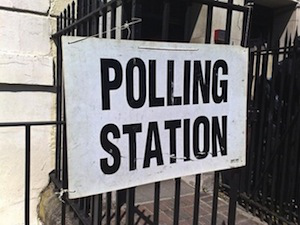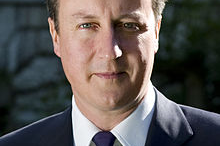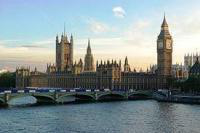UK: Church buildings play key role in 2015 election

Nearly one in five of the places where people will cast their vote at the 2015 general election on 7th May will be in church buildings, new research by the National Churches Trust shows.
Almost 6,000 of the UK's approximately 32,000 polling places - the physical locations of polling stations - are in church buildings, representing 19% of the total.
Claire Walker, Chief Executive of the National Churches Trust said: "These findings show that church buildings play an important role in the administration of the democratic process. Church buildings are well-located and widely recognisable local landmarks. If these buildings did not exist it would leave a big gap in the arrangements local authorities have to put in place to enable people to vote at elections across the country."
Party Leaders' polling stations and places
The number of polling places and stations in the constituencies where five of the party leaders standing for election to the House of Commons has also been obtained by the National Churches Trust.
• Rt Hon David Cameron - Leader of the Conservative Party
Witney 121 polling stations
70 polling places
4 in church buildings (6% of polling places)
• Rt Hon Ed Miliband - Leader of the Labour Party
Doncaster North 70 polling stations
59 polling places
7 in church buildings (12% of polling places)
• Rt Hon Nick Clegg - Leader of the Liberal Democrats Sheffield Hallam
35 polling stations
35 polling places
14 in church buildings (40% of polling places)
• Nigel Farage MEP - Leader of the UK Independence Party South Thanet
41 polling stations
38 polling places
7 in church buildings (18% of polling places
• Natalie Bennett - Leader of the Green Party of England and Wales Holborn & St Pancras
53 polling stations
37 polling places
6 in church buildings (16% of polling places)
Background to the analysis
The figures are based on information collected during the last UK-wide election, that for the European Parliament in May 2014. The National Churches Trust obtained lists of polling stations for that election from every local authority responsible for administering elections in the UK (bar one) and analysed them to derive the figures. Reviews by local authorities of the location of polling stations are required every four years and it is likely that the totals for the European Parliament election and the 2015 general election will not greatly differ.
There may be some variation from the precise totals in that it was not possible in every case to ascertain whether or not the named polling place was a church building, with doubtful cases generally excluded. 'Church building' was defined as a Christian place of worship or building directly associated or linked with it, such as a church hall. A number of non-Christian places of worship also serve as polling places, but these were not included in this analysis.
Polling stations and places
Overall across the United Kingdom, our research estimates that 5,967 of 31,855 polling places were church buildings, totalling 18.73%. It should be noted that the number of buildings used as polling places is not the same as the number of polling stations (which both our estimates and those of the Electoral Commission calculate to be around 40,000) - polling stations for more than one polling district can be held in the same building, or 'polling place'. Analysis of polling places and stations by UK statistical countries and regions
Overall across the United Kingdom, our research estimates that 5,967 of 31,855 polling places were church buildings, totalling 18.73%.
• In England, an estimated 5,122 of 26,400 polling places were church buildings, totalling 19%
• In Scotland, an estimated 315 of 2,624 polling places were church buildings, totalling 12.0%
• In Wales, an estimated 456 of 2,232 polling places were church buildings, totalling 20.4%
• In Northern Ireland, an estimated 74 of 599 polling places were church buildings, totalling 12.4%
The region with the largest percentage of polling places in church buildings was Greater London, with an estimated 664 out of 2,634 in church buildings, totalling 25.21%. The smallest percentage of polling places in church buildings was in Scotland, with an estimated 315 of 2,624 in church buildings, totalling 12%.
Source: National Churches Trust

















